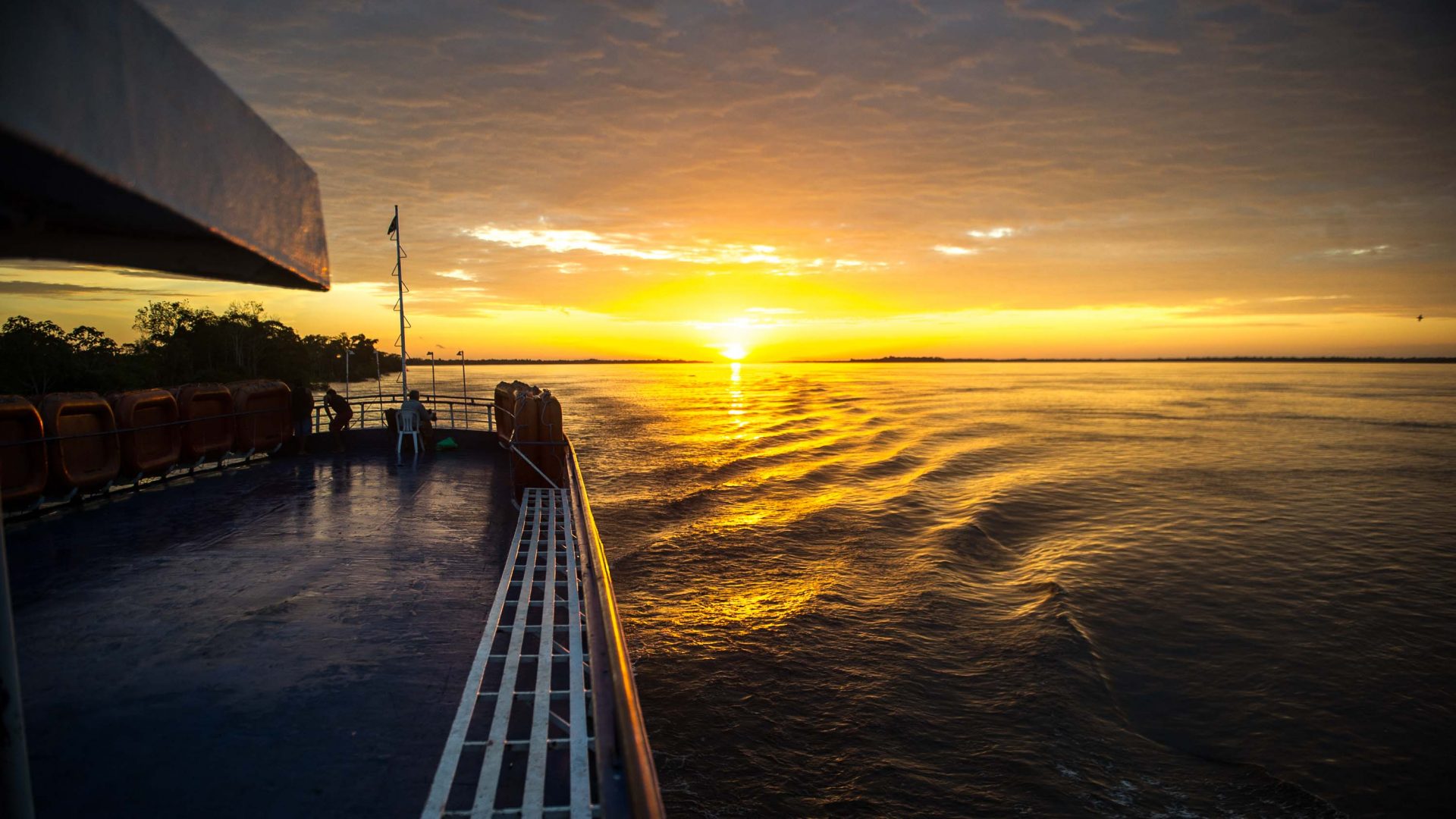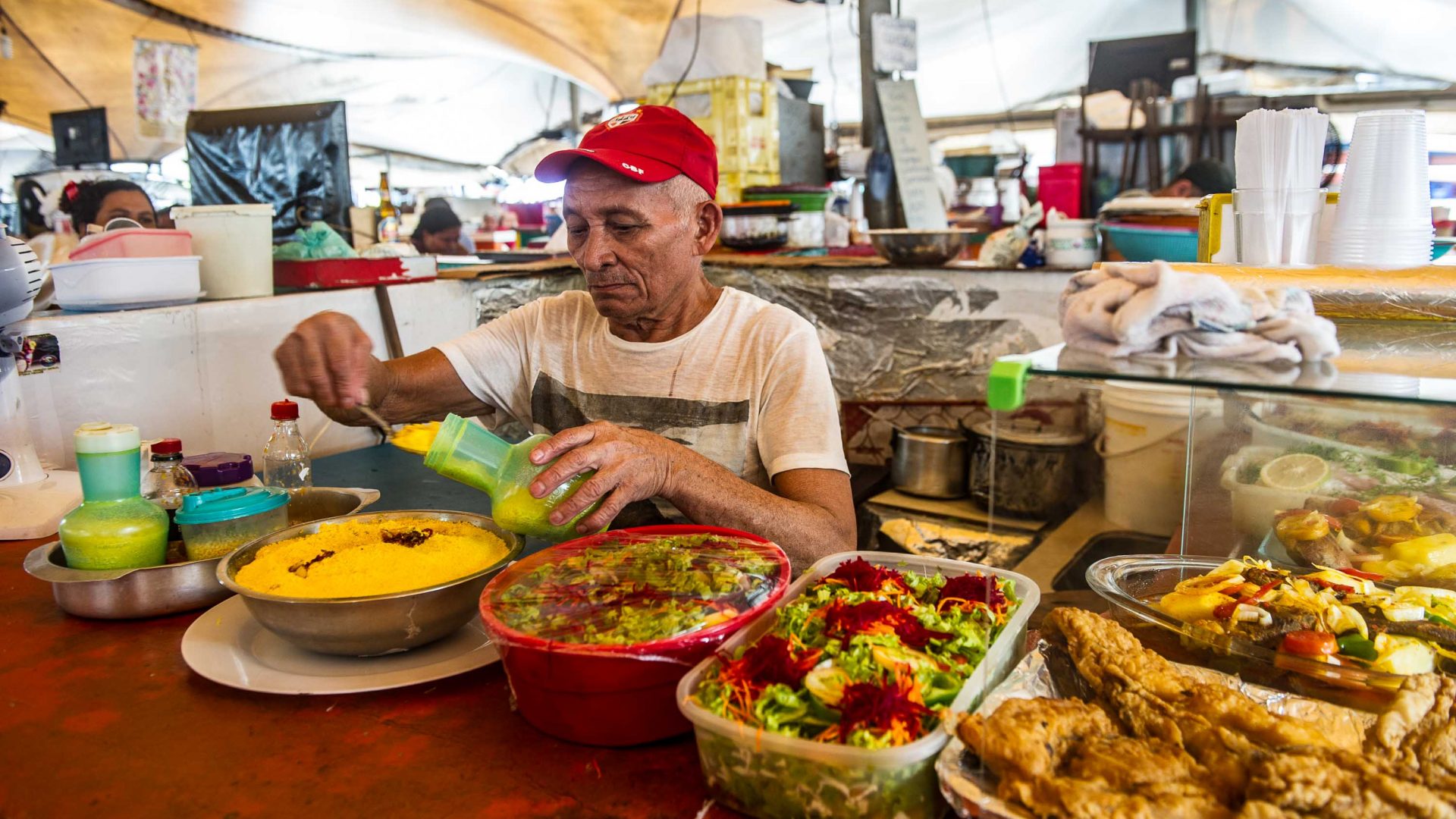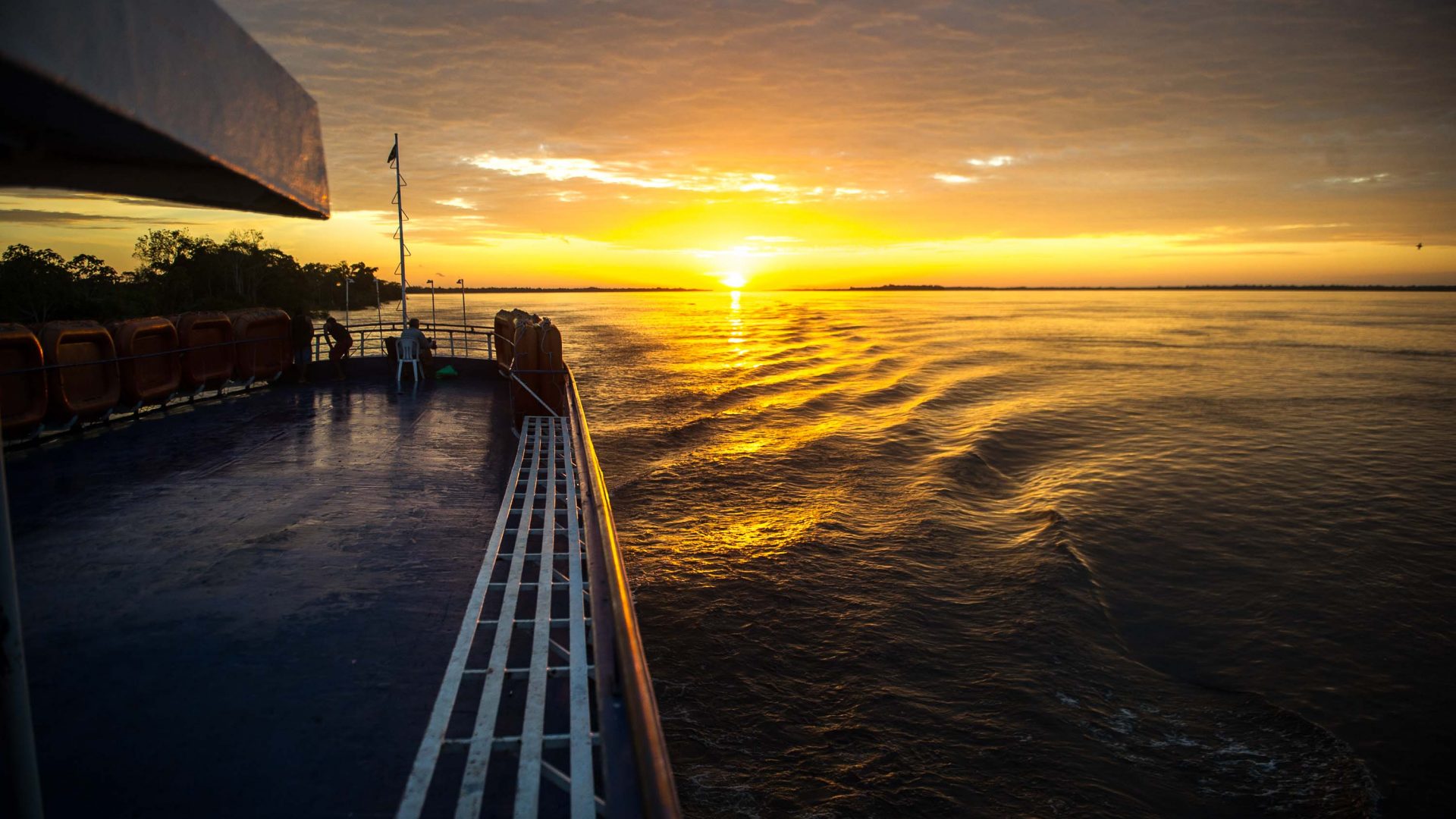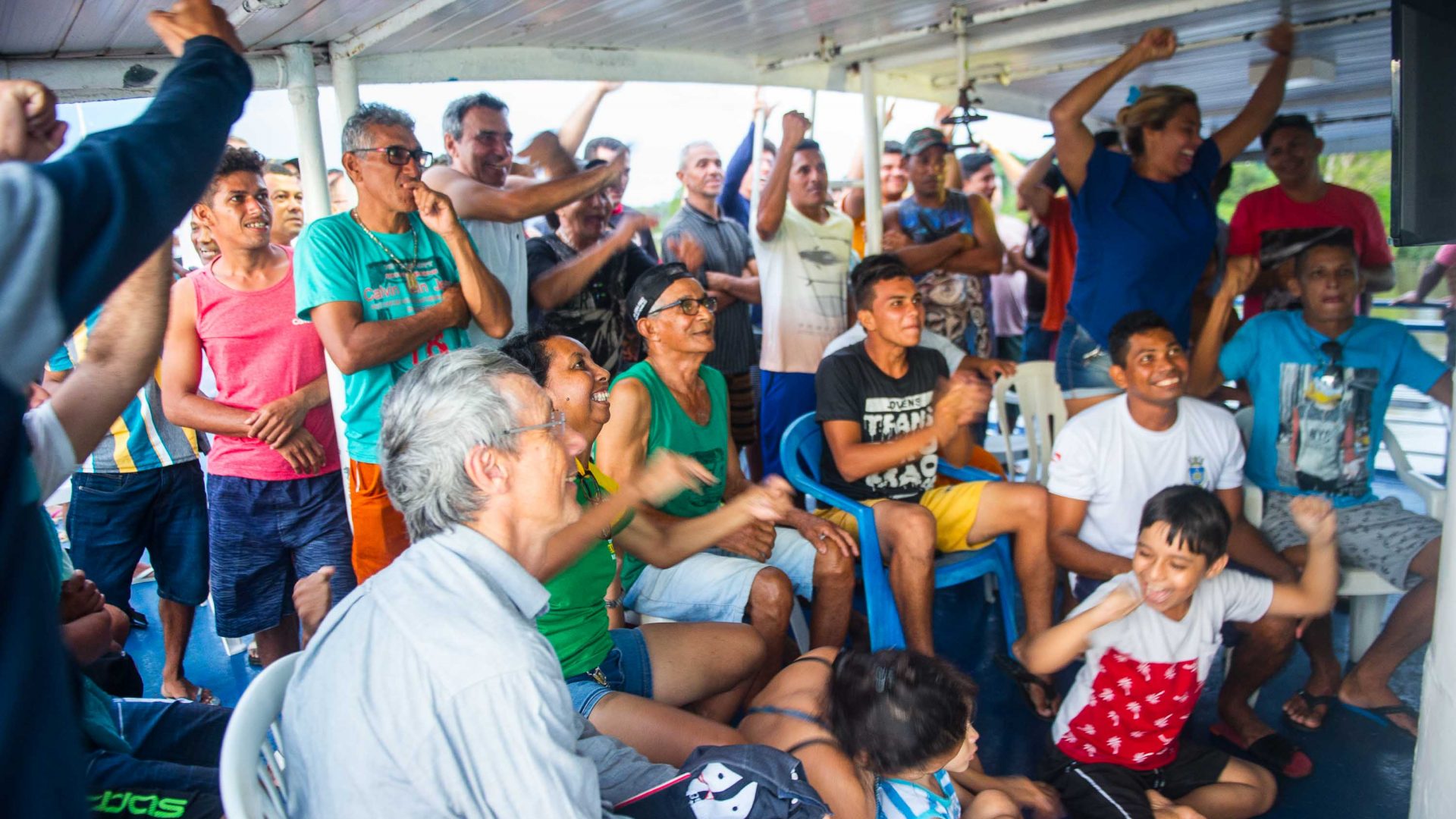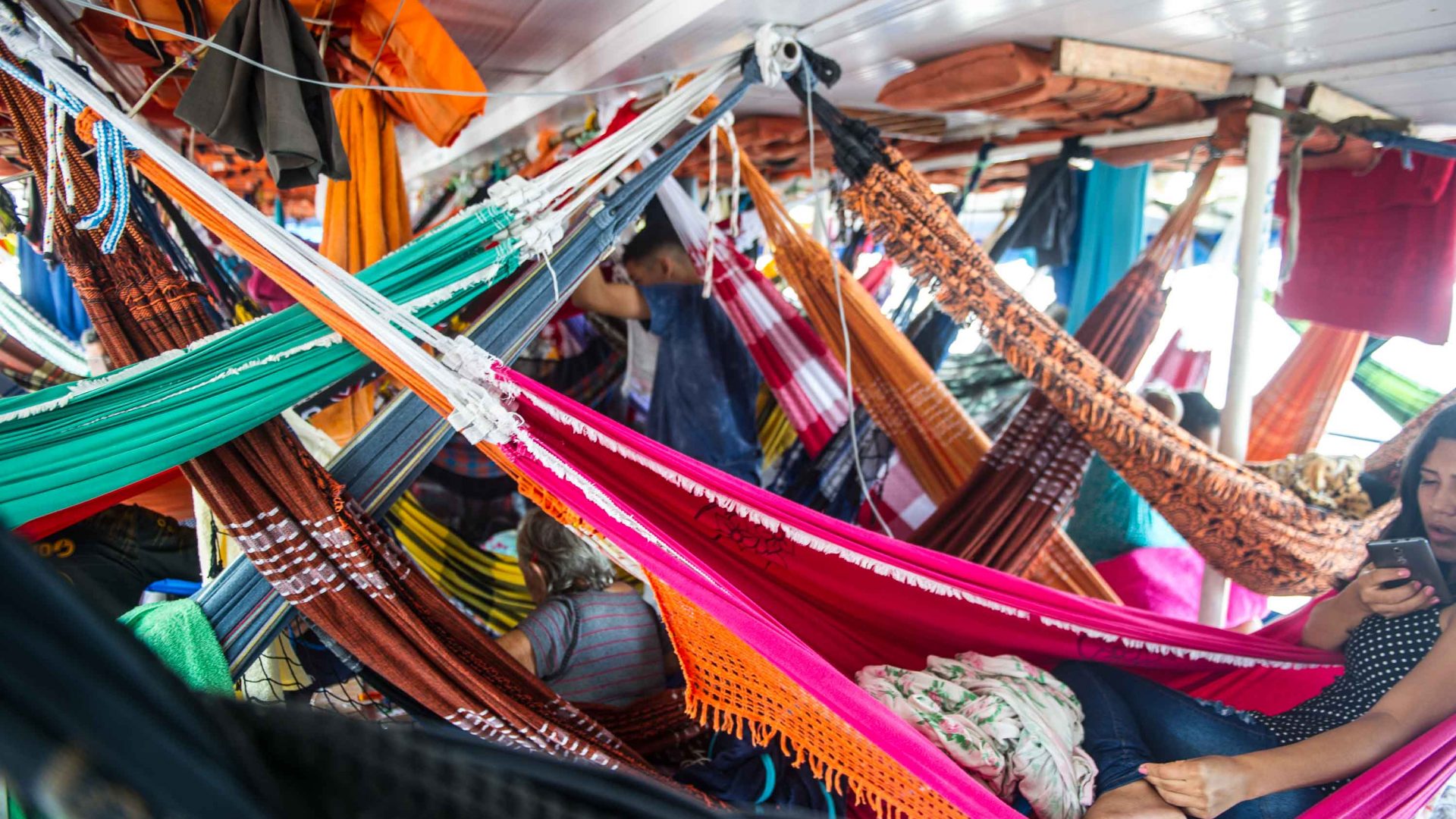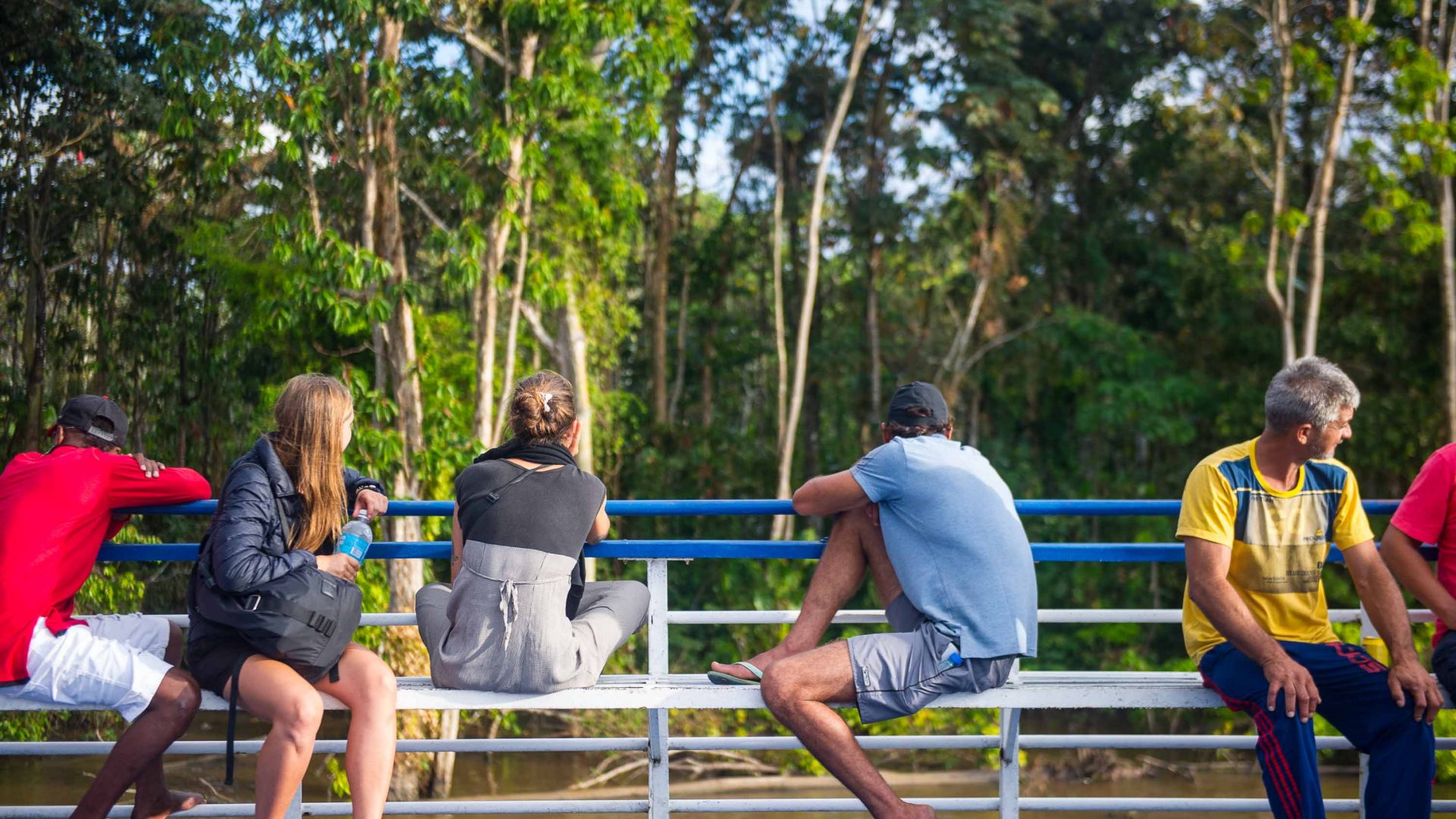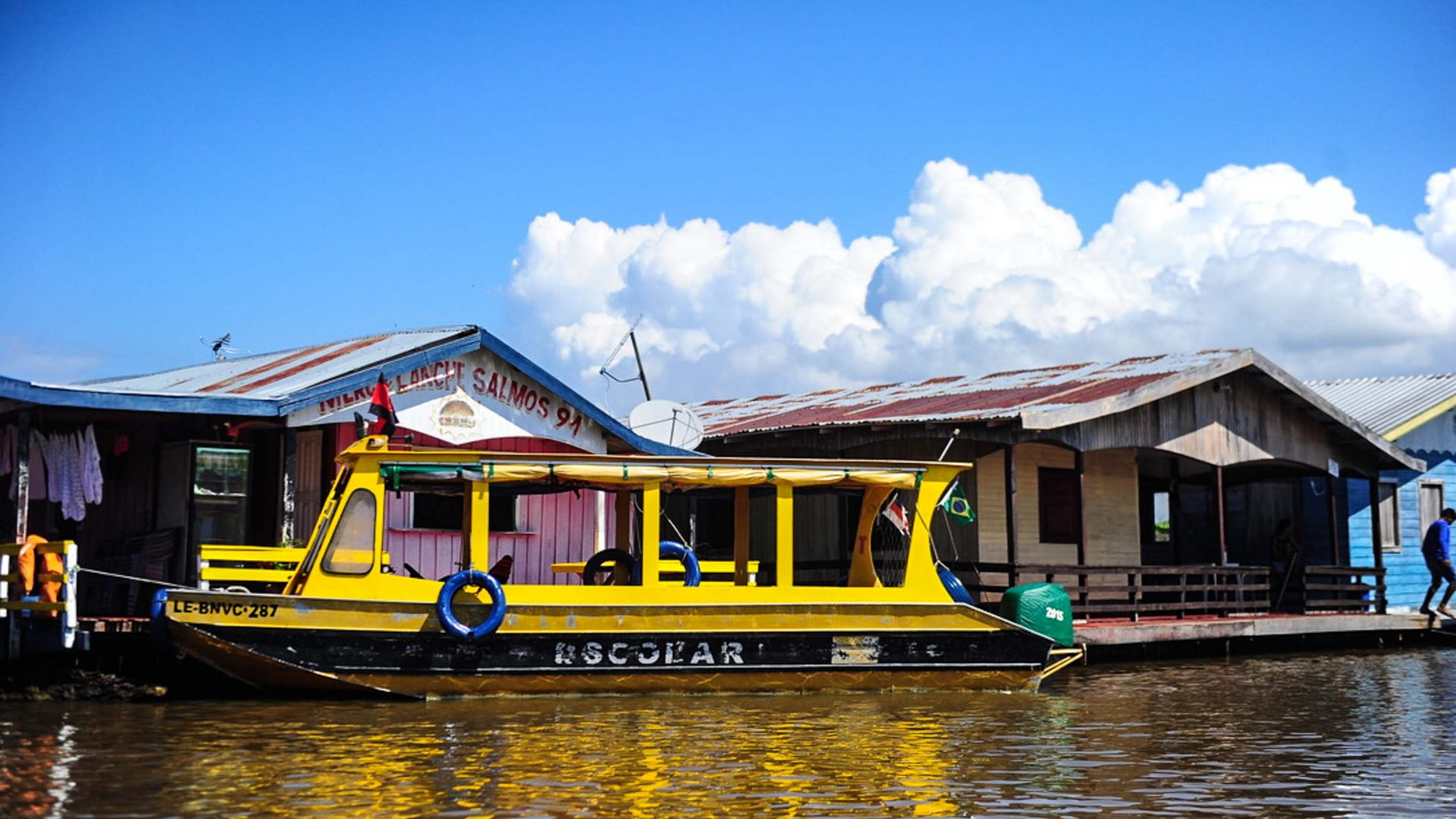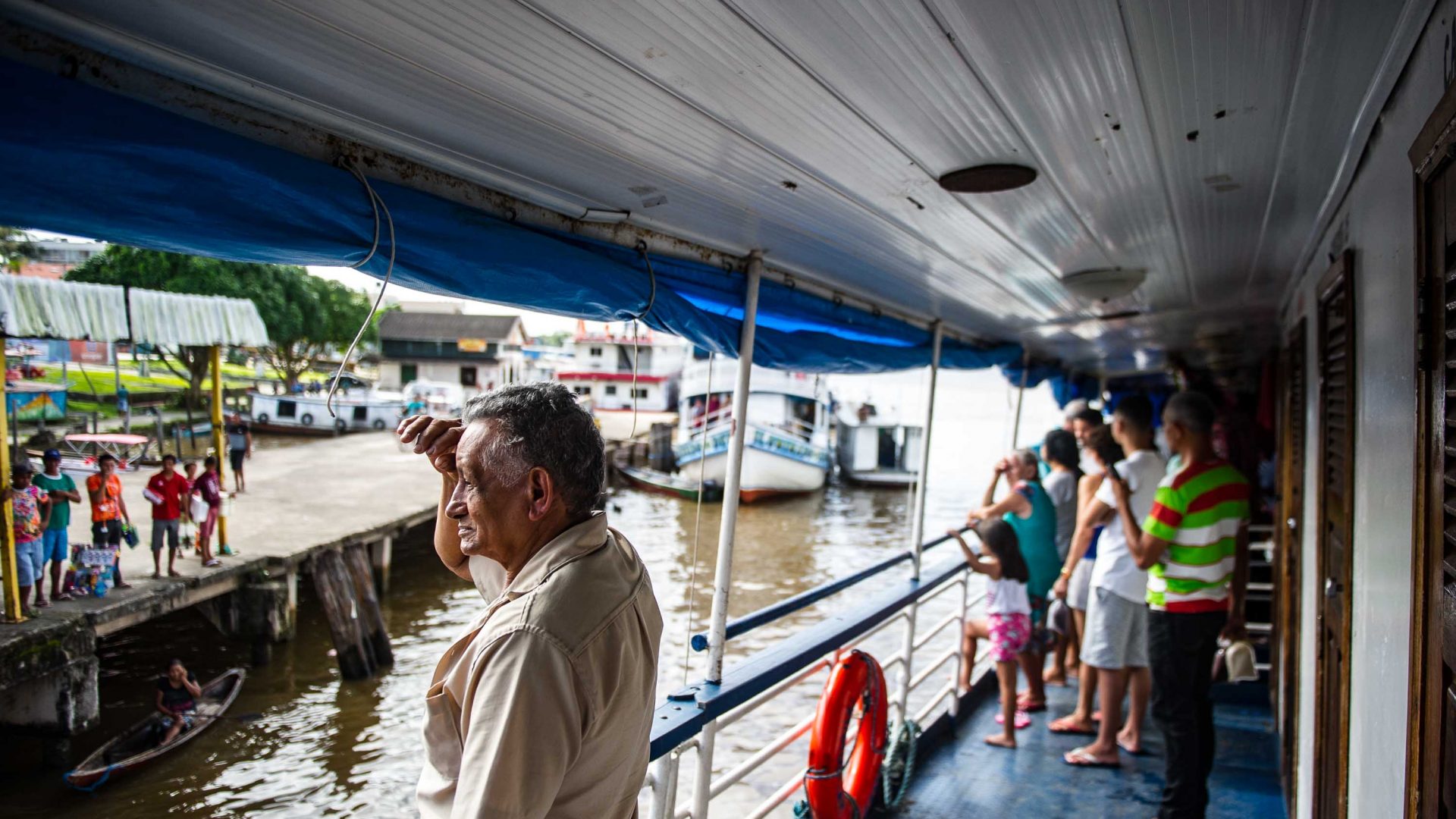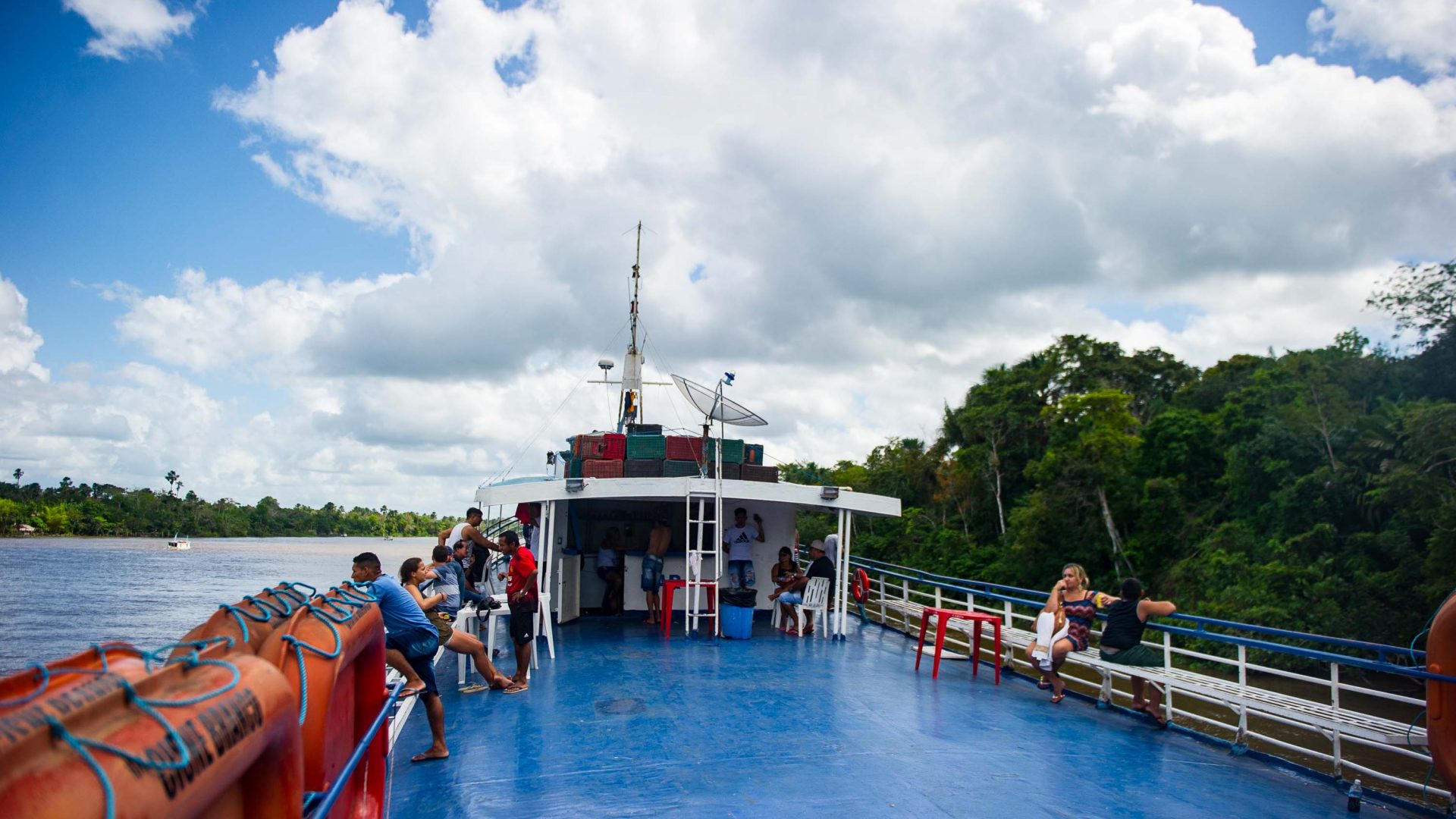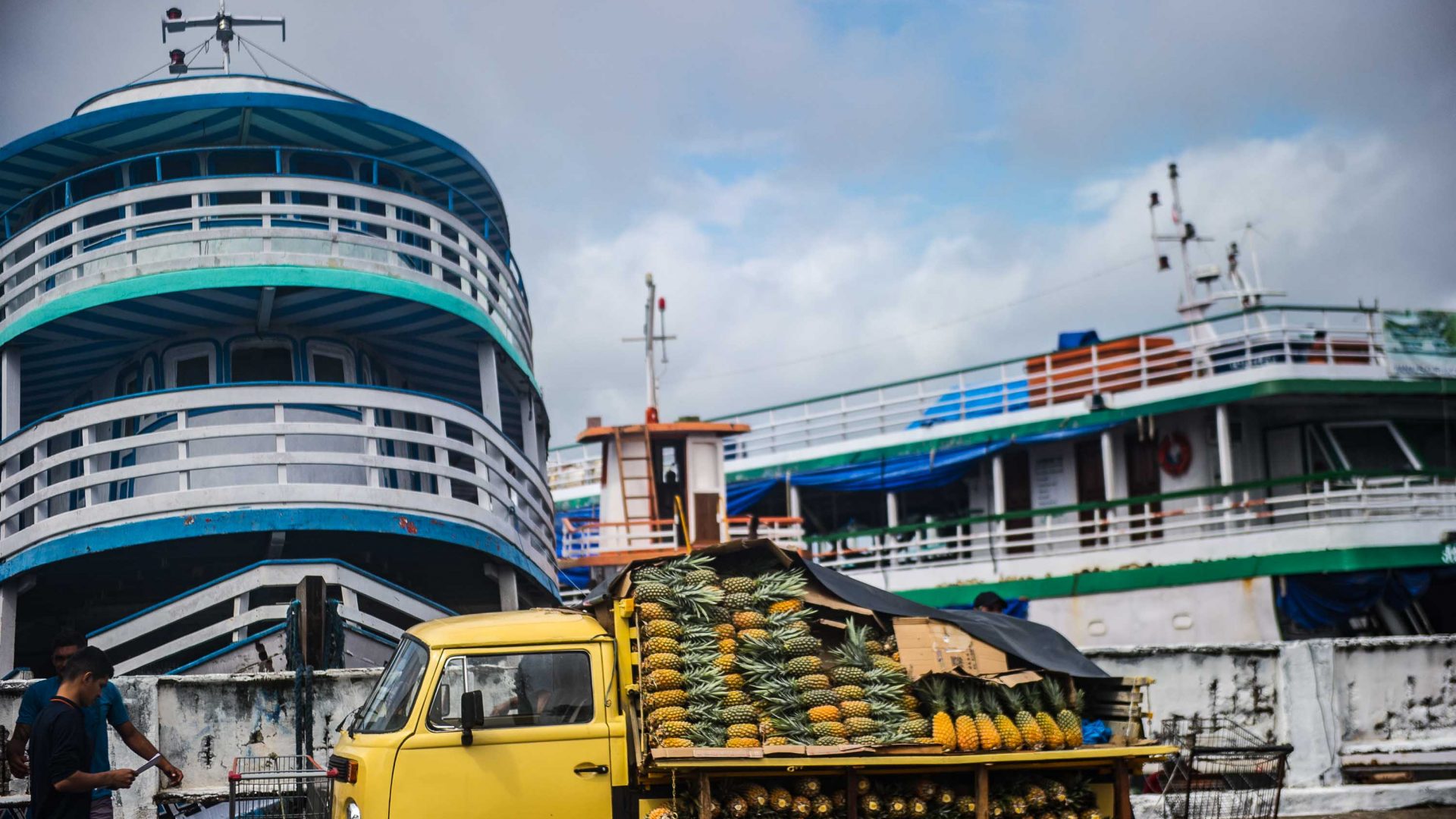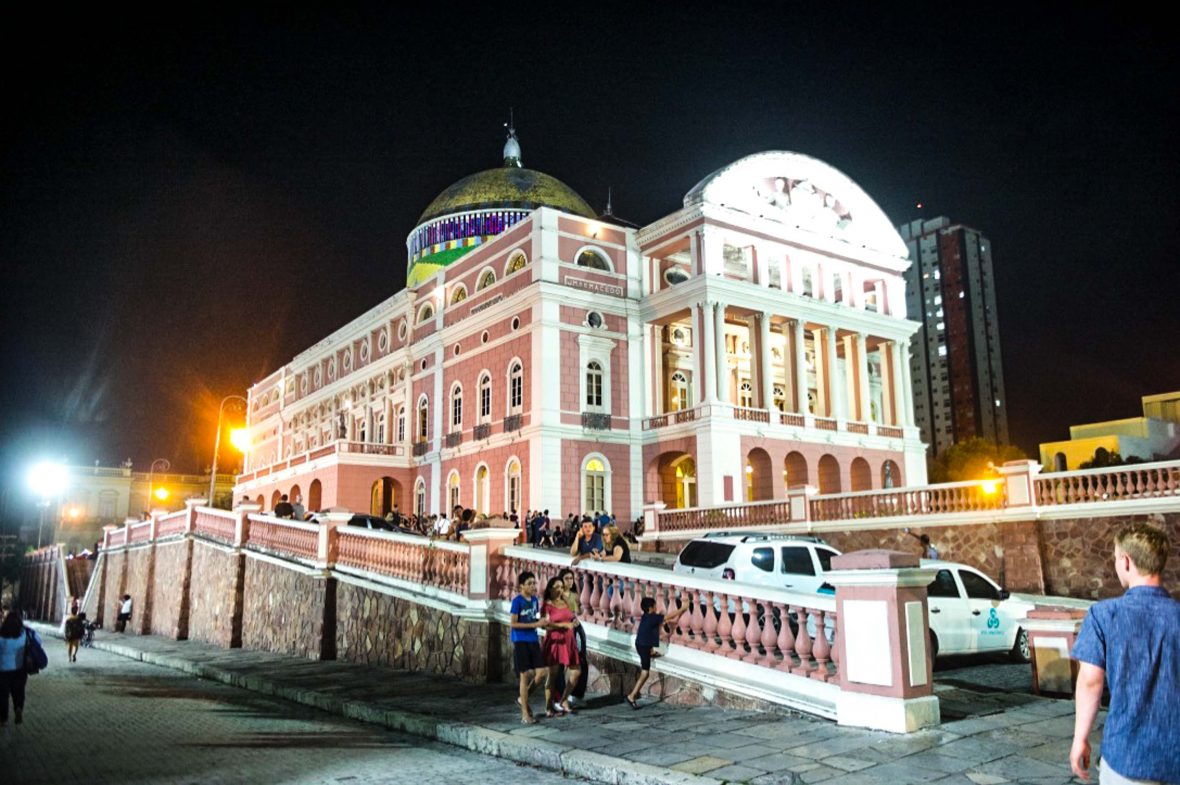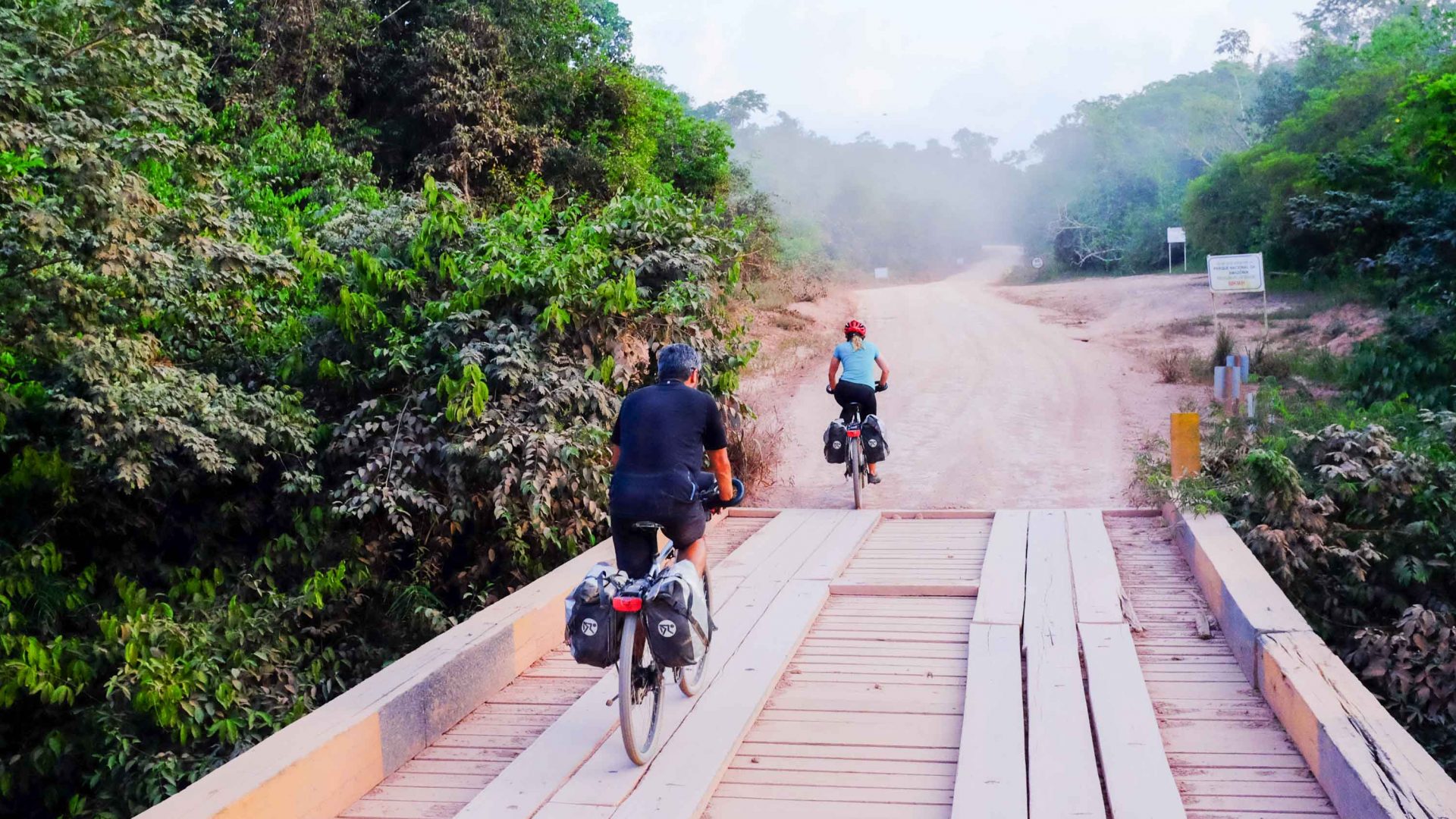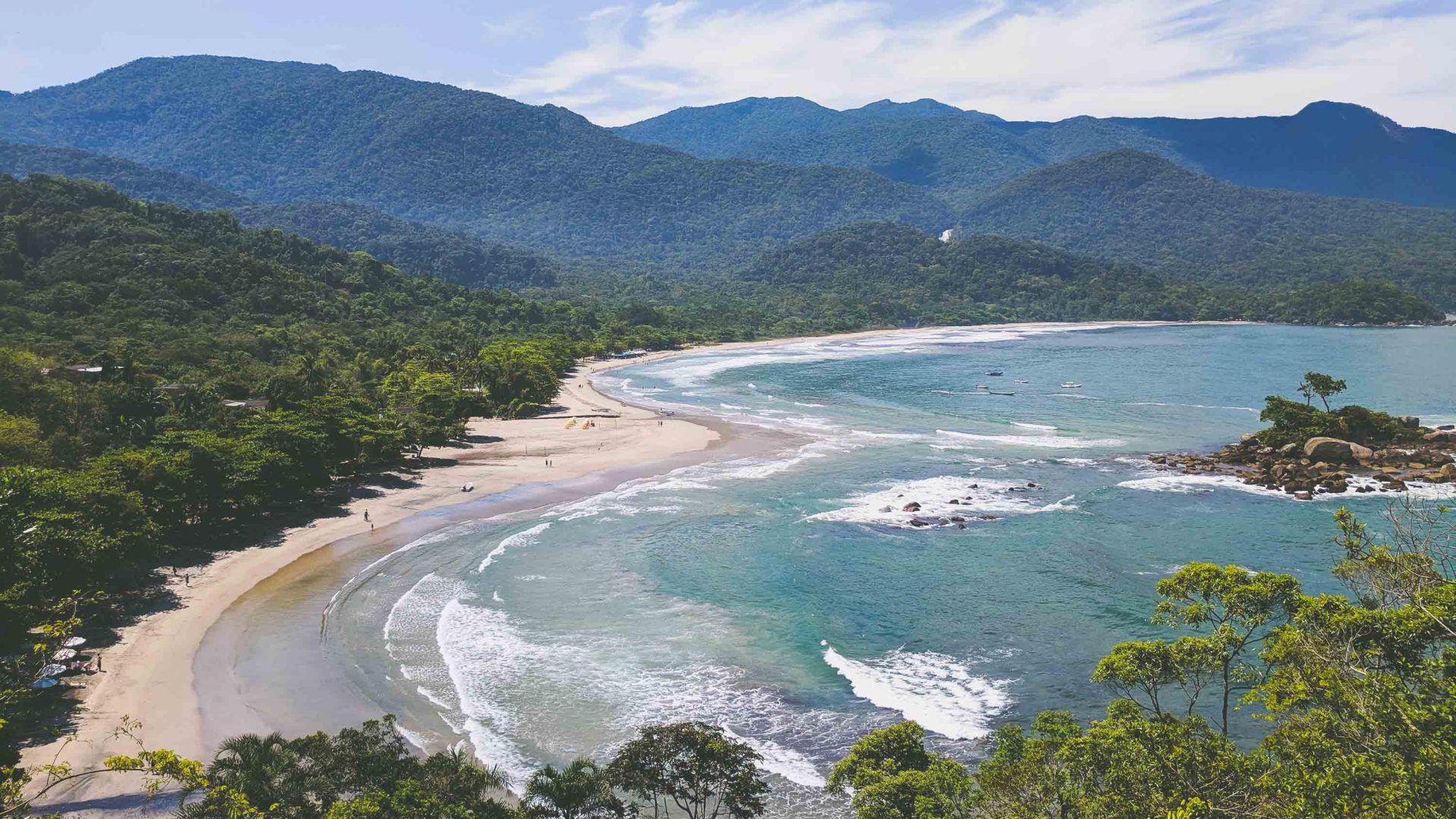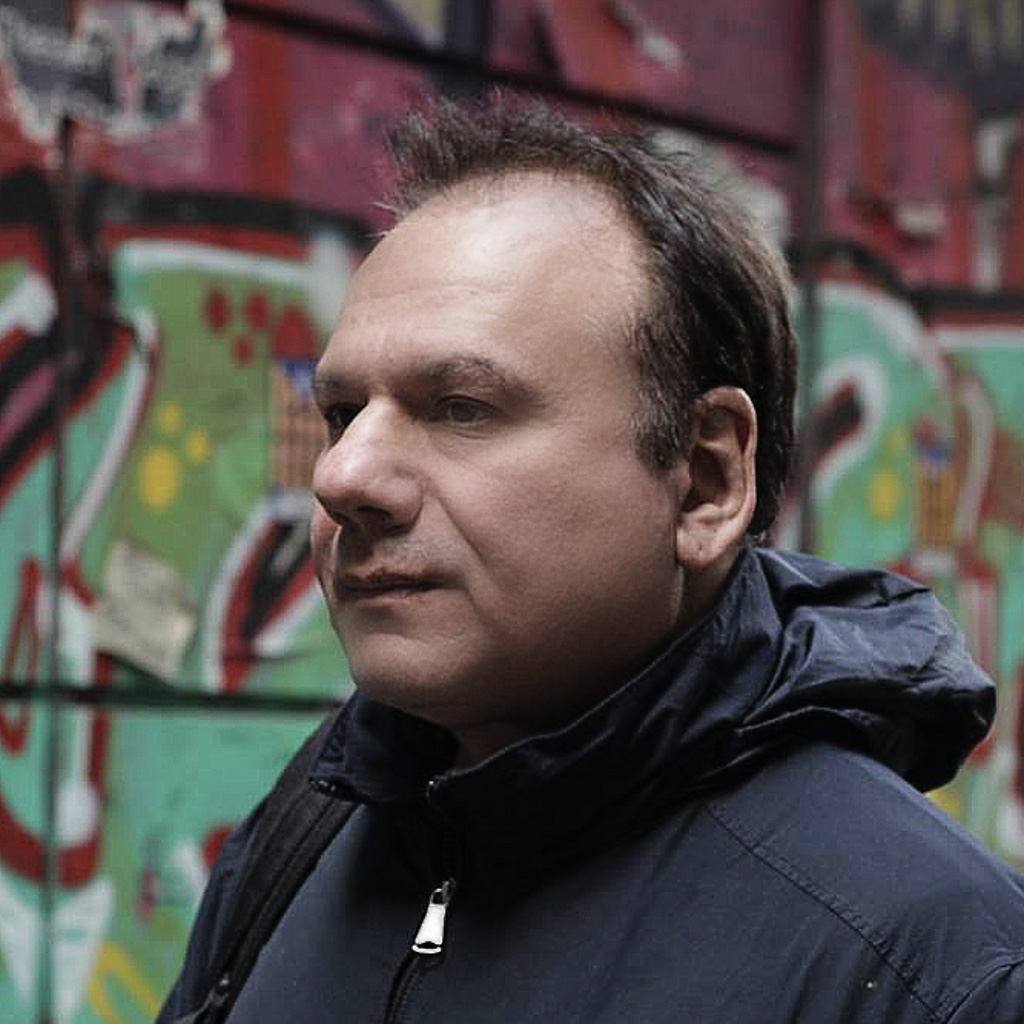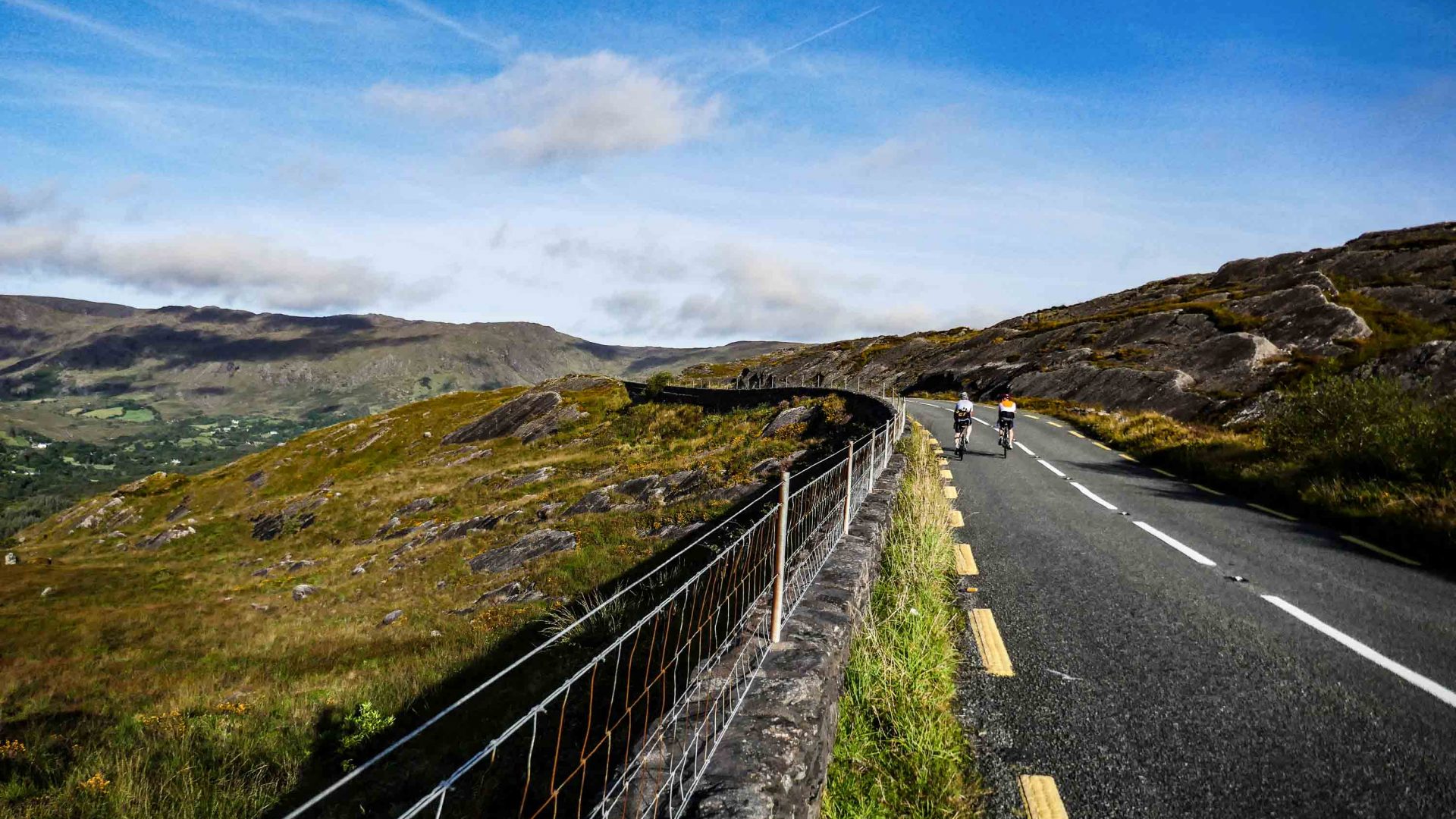Editor’s note: This article was published before the coronavirus pandemic, and may not reflect the current situation on the ground.
Just $250 for a six-day Amazon cruise through Brazil, including meals? It’s a no-frills affair for Mark Stratton as he takes to the river for a taste of life on the Cisne Branco.
When blue sparks crackle from the blackened wall socket in my wardrobe-sized cabin, they illuminate a rhinocerical cockroach with an uncanny ability to second-guess my intention to evict it.
But how could I complain?
I could hardly expect luxury for the price I’ve paid. Which is USD$250. So definitely no deck quoits or cheesy cabarets—instead, my fellow passengers, beery cattlemen and miners belt out leery songs to provide the nightly entertainment.
It’s only a three-hour flight between Belém, the gateway into the Amazon, and Manaus, but I’d come seeking the slow-paced adventure of one of the world’s greatest river journeys. I want to feel Amazonia’s humidity prickling my skin, hear gabbling macaws at dusk, meet Brazilians, and see, first-hand, what remains of a rainforest seemingly heading towards hell in a handcart, no thanks to deforestation and logging.
Public riverboats remain important to the conveyance of people and cargo throughout the Amazon, often servicing isolated communities—and it’s easy to find transportation upriver from Belém, where dozens of them dock at its wharf.
They’re cheap but often overcrowded, so I choose something seaworthy with flotation devices—in some places, the piranha-filled river is way too wide to swim in an emergency.
RELATED: Into the ‘other’ Amazon, and the search for Brazil’s best beach
To provision for the voyage, I linger in gritty Belém, Europe’s first colony in the Amazon. The city grew fat off the land in the 19th century during a rubber boom, splashing the cash like a reckless lottery winner refusing to squirrel anything away for a rainy day.
Then, the immensity of this 1,500-kilometer voyage quickly dawns upon me: We’re slipping anchor around 10pm to sail 27 hours along the River Pará just to reach the main Amazon channel, skirting around a mid-river island the size of Switzerland.
Like ancient Greece’s multi-headed serpent, Hydra, the Amazon wriggles with wetlands, flooded forests and looping oxbow-bends that our captain circumvents with shortcuts through water-hyacinth-choked channels.
The riverboats are nicknamed ‘cage boats’. Resembling floating penal ships, two-decks of passengers are caged behind iron bars used to string hammocks so closely together that when conditions get choppy the hammocks swing and hips collide like executive desktop toys.
Hammock tickets are even cheaper ($120 for six days) but I don’t fancy swinging like a pendulum. Besides, my cabin proves a bolthole against the raw heat and an escape from the boozy noise of the top deck bar where beers sell for a buck.
Meals, meanwhile, are dispensed through the galley’s hatch. The food is bad, and nutrition-free: Think foil trays of fried chicken with rice and coagulated spaghetti. Upon docking in riverside towns, passengers scrambling onboard to find hammock space collide with those heading down the gangplank to supplement their diet with acai, fruits, ice popsicles, and Styrofoam-box ready meals, and, not least finger-licking fried piranha.
RELATED: What cycling 4,000 kilometers along the Transamazonica tells us about the state of the Amazon
These port stopovers break up long soporific days, where, with every meandering turn, passengers migrate from starboard to port and back again, to find shade from the fierce sun.
Before the river town of Gurupá, we finally join the true Amazon. For a while, we lose all sight of land—my Google Maps shows the river is 50 kilometers wide. It feels like being mid-ocean.
While I marvel at pink river dolphins as lurid as Lady Penelope’s Thunderbirds Rolls Royce, the Brazilians get excited by massive river barges heading downriver, some 100-meters-long, hauling farmed soya for cattle-feed or logs.
I don’t see a scintilla of primary rainforest in six days. It’s all gone. Secondary riverbank forest yes, but mostly watery cattle farms set amid emerald-green wetlands shared by livestock and storks and egrets.
On the third day, we’re supposed to stopover for eight hours in Santarem, the biggest city on the route. But we’re lagging behind schedule, so the captain hurriedly unloads cargo and passengers, and ploughs on through the metallic-blue Tapajós tributary which briefly flows like a Rothko painting alongside the brown sedimented Amazon, segregated by the density of their particles and temperature.
We enter Amazonas State thereafter, arriving at 2.45am in pitch-black, in Juruti. Whatever time of night, I love the spectacle of docking. Juruti’s quay is brightly lit, and it’s Saturday night and boisterous. An outdoors gospel vigil whips up a febrile crowd, yet the preacher fights a losing the battle for the Amazon’s soul, competing with revelers staggering out of decibel-splitting nightclubs, rowdily drunk.
Increasingly, beyond the region of Itacoatiara, waiting quayside crowds appear more Amerindian in looks. I watch Joaquim depart, engulfed by his family. It’s touching. The captain dons his officer’s Sunday whites and during our final stretch into Manaus parishioners arrive by canoes to little Assembly of God churches floating on pontoons.
Carved from jungle, Manaus is a city of two million people; its belltowers and refineries appear like an apparition. I disembark and get a ride with Andréa, a knowledgeable local taxi driver. “Between 1850-1925, we were the world’s second richest city because of rubber,” he tells me. “Everything came from overseas. Even Gustav Eiffel came to build our market”.
It’s a lively, brilliant city fused from Amerindian, African, and European blood. I miss the Amazon’s rhythm (although not my mind-reading cockroach) but enjoy a bed that doesn’t rock at a former Portuguese mansion, Villa Amazônia, where the tacacá fish soup is divine.
Manaus’ pinnacle of 19th-century rubber-funded largesse is a world-renowned opera house, a blancmange-pink neoclassical colossus with a multicolored dome of glassy Alsatian tiles, under which I join an audience one evening, catcalling throughout a performance of operatic classics, climaxed by a strangulated rendition of Puccini’s Nessun Dorma.
Before the show, I bump into Jørgen the Norwegian sailor and share a chilled pilsner. He’s venturing further upriver on another six-day riverboat journey towards the Peruvian border, where the Amazon narrows and for now, the rainforest remains intact. Perhaps another contender for the best value cruise on Earth …
